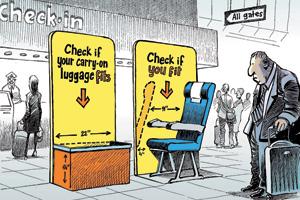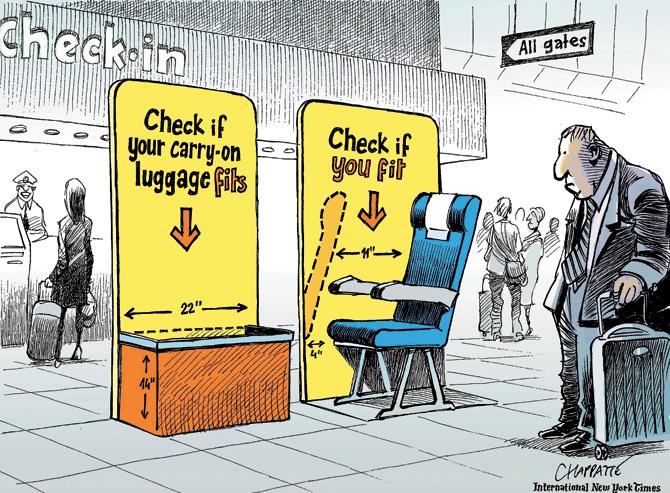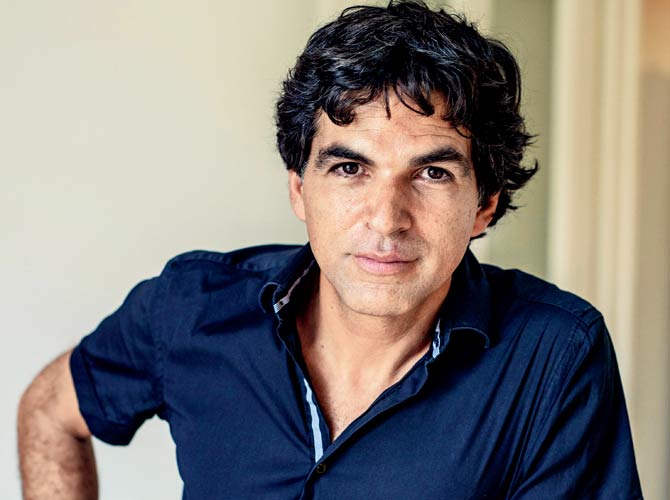New York Times cartoonist Patrick Chappatte talks about negotiating the tricky terrain of political cartooning


By Chappatte, in The New York Times
ADVERTISEMENT
Patrick Chappatte has had an interesting journey around the world. Born in Pakistan to a Swiss father and a Lebanese mother, he later went on to spend his growing up years in Singapore and Switzerland. Today, the New York Times editorial cartoonist is hailed as a pioneer of comics journalism, a genre that took Chappatte to troubled terrains like Gaza, the slums of Nairobi, gang lands of Southern America among many more. Currently, the 50-year-old is in India as part of a series of programmes organised by the Swiss Consulate to commemorate 70 years of Swiss-Indian friendship.

While comics journalism and political cartoons are often perceived as two sides of the same coin, Chappatte underlines what sets the two apart. "Political cartooning involves sitting at your desk and commenting on news. It's mostly black and white. Comics journalism entails going on the field, just like a journalist, and telling the story of what you see and not what you think," he says. Over a 20-year-long career, he has been committed to "exploring all that one can do with images". Towards that end, a large part of his field work has been to conduct workshops with disparate groups and make them work on a common project. "Cartoons are a powerful tool, that can easily become propaganda against opposing viewpoints. But that's not what it should be, which is why I feel it's important to unite different voices," Chappatte says.

Patrick Chappatte
The challenges of working in a medium that's open to interpretation are manifold. In 2014, soon after India's announcement of the Mangalayan Mars Mission, the New York Times had published a cartoon by Heng Kim Song, that appeared to portray India as the odd one out in the rich countries' space club. NYT editor Andrew Rosenthal had even apologised for the same. What went wrong there, we ask. "In international media, it's important to see things in context. Personally, I don't think the intent was to put India down. He probably wanted to say that the space club is no more a rich countries' club. These things will happen when you're talking to very different audiences. It's part of the game." He adds, "I cannot control how a cartoon will be interpreted. But, I can control my message. The key is to be honest and responsible. A good political cartoon is light in its form and heavy in its message."
And what's the ideal way, for a political cartoonist, to negotiate tragedy, we ask Chappattethe who has told stories on Charlie Hebdo and Paris attacks among several other tragic occurrences. "That's when you cannot do much, except perhaps come up with an empathetic cartoon. Cartoons work best when there's contradiction. Whether it's tragedy or euphoria - there's only one emotion there. Cartoons are not very good at that."
Log on to: Chappatte Cartoons on Facebook
Catch up on all the latest Mumbai news, crime news, current affairs, and also a complete guide on Mumbai from food to things to do and events across the city here. Also download the new mid-day Android and iOS apps to get latest updates
 Subscribe today by clicking the link and stay updated with the latest news!" Click here!
Subscribe today by clicking the link and stay updated with the latest news!" Click here!






